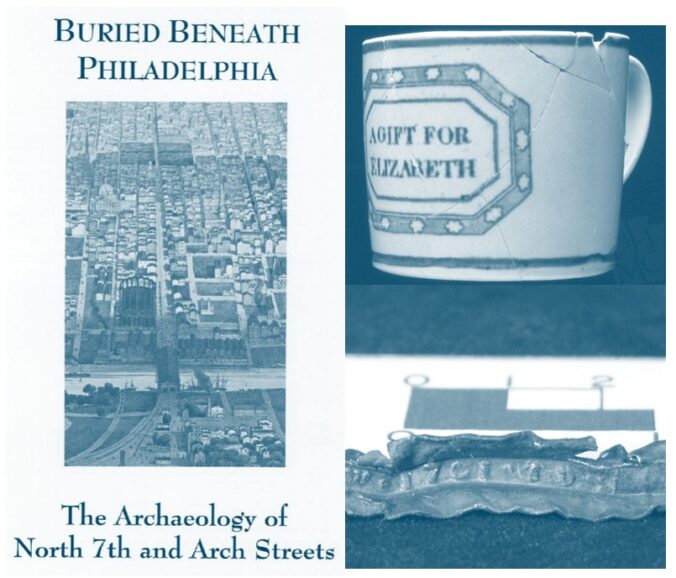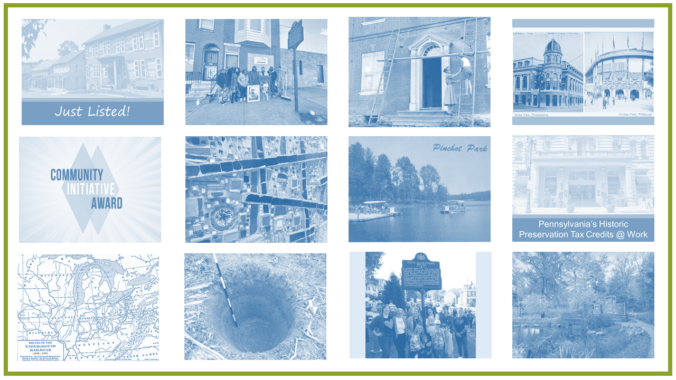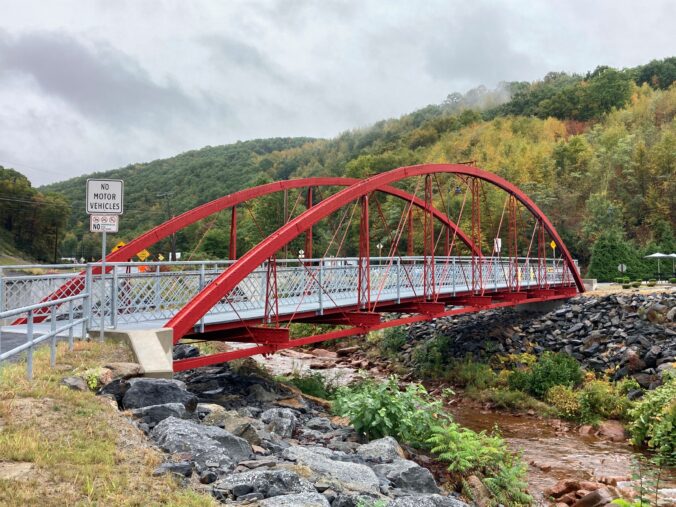In the 1990s, a federal construction project for a new detention center in Philadelphia resulted in the identification of an urban archaeological site in the area of North 7th and Arch Streets.
Category: Mitigation Files (Page 1 of 4)
On large stained and moss-covered stone masonry abutments over a single line of tracks in Tredyffrin Township, Chester County rested a dinosaur, a wrought iron relic of the past originally constructed to support the industry of a developing nation. Its appearance was worn and weathered from over 140 years of service.
Random holes and a mixed bag of fastener types and sizes littered the visible faces. The original railroad floor system was long gone and replaced with a timber vehicular deck. Its live load carrying capacity was a mere fraction of what it once was. However, under all of this rust was a diamond, a rare and complete example of a wrought iron pin-connected warren pony truss with built-up corrugated diagonal tension members, the last of its kind.
This is the story of relocation and reuse, adaptive reuse, of the last known remaining pin-connected wrought iron Warren pony truss in Pennsylvania – The Howellville Truss (2004RE01890).
Railroads played a vital role in Pennsylvania’s economic development, particularly during the Industrial Revolution and beyond. They facilitated the transportation of goods, raw materials, and people, fostering industrial growth, urbanization, and the expansion of markets. The construction of railroads like the Beech Creek Railroad and the Buffalo, Rochester & Pittsburgh Railroad, that primarily transported coal and other materials to homes and factories throughout Pennsylvania, played a significant role in the industrialization of the state.
This is part of a biannual blog series highlighting the agreement documents executed by PA SHPO in accordance with Section 106 of the National Historic Preservation Act and its implementing regulations.
This is part of a biannual blog series highlighting the agreement documents executed by PA SHPO in accordance with Section 106 of the National Historic Preservation Act and its implementing regulations.
Is it even the end of a year if you don’t see at least a dozen “year in review” lists?
At the end of July, PennDOT celebrated the relocation of a historic bowstring truss bridge in Schuylkill County onto Schuylkill River Greenways’ trail system with a ribbon cutting ceremony.
This is part of a biannual blog series highlighting the agreement documents executed by PA SHPO in accordance with Section 106 of the National Historic Preservation Act and its implementing regulations.
Between January 1 and June 30, 2024, PA SHPO has been a signatory to approximately ten (10) Section 106 agreement documents with five different federal agencies as part of consultation for the resolution of adverse effects to historic properties.
“Coming together is a beginning. Keeping together is progress. Working together is success.” — Henry Ford
“This bridge will triumphantly typify the trail-blazing strategy…” so said Pennsylvania Governor John S. Fine in 1954 about the soon to be constructed Hawk Falls Bridge, finishing with “that took the Pennsylvania Turnpike System across streams of great width and turbulence…and through the rocky cores of mighty mountains.”








Recent Comments